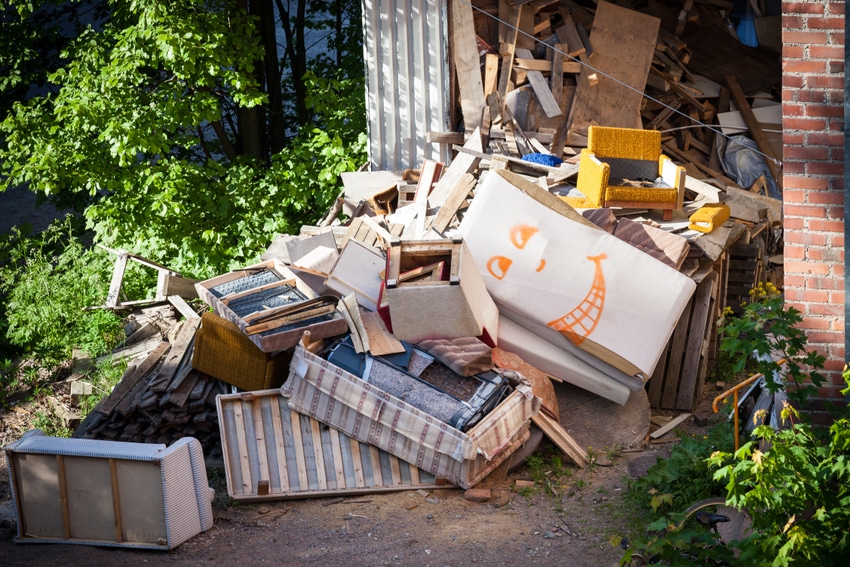Over many years, Tampa, Fla., resident Carl Cosio accumulated in his yard an assortment of discards—newspapers, bottles, cans, tubs, barrels, dolls, toys, pickup trucks—scattered here and there amongst an abundant overgrowth of trees, plants and wild vegetation.
October 16, 2017

When a government agency or prosecutor goes over the top in pursuing an alleged transgressor, we often hear the behavior described as “overzealous.” Courts will sometimes censure prosecutorial excesses by overturning convictions or dismissing charges. Other times, as we see here, it will just send a relatively quiet rebuke.
Over many years, Tampa, Fla., resident Carl Cosio accumulated in his yard an assortment of discards—newspapers, bottles, cans, tubs, barrels, dolls, toys, pickup trucks—scattered here and there amongst an abundant overgrowth of trees, plants and wild vegetation. In 2013, the city finally took action to address the clutter on the property when code inspector Bruce Lucas issued a citation to Cosio. Thereafter, Lucas returned to the property frequently and spoke with Cosio many times by phone. However, whatever efforts Cosio may have made to clear and clean the site, they were, as Lucas saw it, insufficient to meet code requirements.
In 2015, the city initiated an enforcement proceeding against Cosio based on the condition of his property. After determining that Cosio's yard constituted a public nuisance, threatened public health, safety and welfare, and violated several city ordinances, the code enforcement board gave Cosio a deadline to bring his property into compliance and levied a daily fine if he failed to do so.
After the compliance deadline, Lucas returned to the property and found it in an unacceptable condition. Taking the matter to the next level, in October 2016 the code enforcement office initiated an abatement action on of the property—a process extending over several days during which city workers cut down the offending trees and brush, trimmed the overgrowth, and hauled away all of the accumulated trash and debris, including the felled greenery.
Following the city's abatement activity, Cosio was charged with one count of felony littering. A jury found him guilty, and the circuit court withheld adjudication, sentencing him to five years of probation and mandating restitution and a fine.
(Under Florida law, when a judge "withholds" adjudication, the defendant is not convicted of the crime. That's a big deal because the defendant can answer "NO" to the common question: “Have You Ever Been Convicted of a Crime?” Another benefit is that it allows the defendant to later petition to seal and expunge the court record, which cannot be done after an adjudication of guilty. In a felony case, a defendant who receives a "withhold of adjudication” can claim that he or she has never been "convicted" of a felony—thus the person can still vote, still own a firearm, etc.)
On appeal, Cosio challenged the measurement of his litter. He argued that not all the debris taken from his property should be considered “litter,” as described in the Florida Litter Law, and that the amount of properly ascribed litter removed did not rise to the felonious threshold. Under the law, a person commits a felony if he dumps litter in an amount exceeding 500 pounds or 100 cubic feet in volume. In particular, Cosio argued that the prosecution wrongly included the trees and overgrowth that the city cut down, which he insisted was not his "litter." The State responded that overgrown trees fit the definition of litter," but that, even without them, sufficient evidence sustained the jury verdict.
Noting relatively little evidence in the court record as to any precise measure of Cosio's trash and debris, the appellate panel referred to testimony from Lucas that an entire line of cherry laurel trees was cut down during the abatement process and that a total of 50 tons of material was ultimately removed from the property. “Mr. Lucas's estimate in that regard clearly included not only the piles of effects and personal property Mr. Cosio had scattered across his yard but also all the trees and vegetation that the city had clear cut as part of the abatement process,” the opinion said. Later testimony from Lucas clarified that the "accumulation of the junk, trash, and debris" was more than 100 cubic feet. In addition to this testimony, the state introduced several photographs through Lucas that depicted the conditions of Cosio's property before the abatement process.
Given that Cosio had not disputed the code enforcement board’s ruling that his property had become a "public nuisance,” the appeals court inquiry had two parts: first, can the State properly include the trees and vegetation overgrowth, which the city had cleared away, in measuring the amount of dumped litter; and second, if it cannot, did sufficient evidence exist that Cosio had dumped 500 pounds or 100 cubic feet of litter on his property?
The state argued that the trees and brush the city was required to cut down to abate Cosio's property could be deemed "litter" because the litter law lists a wide range of potential litter, including "building or construction material, " "wood, " and substances resulting from "agricultural operations." As the state saw it, the trees and brush the city cut down were comprised of wood, and wood can be harvested in agricultural operations or used as a building or construction material. The appeals court rejected this interpretation of the litter law.
“The legislature ... define[d] litter by referencing a list of items [beginning with] ‘garbage,’ ‘rubbish,’ ‘trash,’ and ‘refuse’ ... but the remaining items that follow share a common feature: they can all, in some way, be viewed as potential examples or variants of discarded ‘garbage,’ ‘rubbish,’ ‘trash,’ or ‘refuse’ of one sort or another,” the opinion stated. “As such, we construe ‘wood,’ ‘building or construction material’ and ‘substance ... resulting from ... [an] agricultural operation’ in the light of those prefatory examples ... [illustrating] specific kinds of garbage, rubbish, trash, or refuse.”
“With that principle in mind,” the opinion continued, “it defies any reasonable understanding of what could plausibly be characterized as ‘litter,’ or ‘garbage,’ or ‘trash,’ or ‘rubbish’ to maintain, as the State does here, that live, verdant plant life and forestry falls within the ambit of any of those words.”
To establish its case, the state had to prove that Cosio "dumped" – that is, threw, deposited, discarded, placed, disposed of—offending material. With respect to the trees and overgrowth on his property, a city employee or contractor, not Cosio, was responsible for cutting and removing them. “Whatever else can be said of Cosio's attention (or inattention) to the overgrowth on his yard, it was not a problem that could be characterized as stemming from his ‘dumping’ plant life across his property,” the court said.
A small victory in an otherwise lost cause. As it turned out, the appeals court was satisfied that the State presented sufficient evidence from which the jury could have concluded that Cosio had dumped a qualifying amount of litter—as the statute describes it—to support his conviction. By the time of the trial, Lucas had become very familiar with Cosio's property. He testified unequivocally that the accumulated trash (not including the overgrowth, trees and vegetation) on Cosio's yard exceeded one hundred cubic feet. Furthermore, the jury saw several photographs with various views of the accumulations in Cosio's yard prior to the City's abatement. These pictures show an enormous quantity of accumulated personal effects—all of which could easily be deemed "garbage," "rubbish," "trash," or "refuse"—scattered across Cosio's yard.
Near the end of its opinion, the appeals court took a mild swipe at the prosecution. “[T]he State's pursuit of a felony case through a jury trial against an elderly gentleman who hoarded junk on his overgrown yard strikes us as a rather questionable expenditure of criminal justice resources.” Nonetheless, it was not, by itself, a basis for the panel to overturn the trial court's ruling.
Cosio v. State, No. 2D16-2439 (Fla. 2d DCA Sept. 6, 2017)
Barry Shanoff is a Bethesda, Md., attorney and general counsel of the Solid Waste Association of North America.
About the Author(s)
You May Also Like




